Every discovered asset — from subdomains to technologies — is automatically analyzed, enriched, and correlated with exposures, providing a single source of truth for your external attack surface.
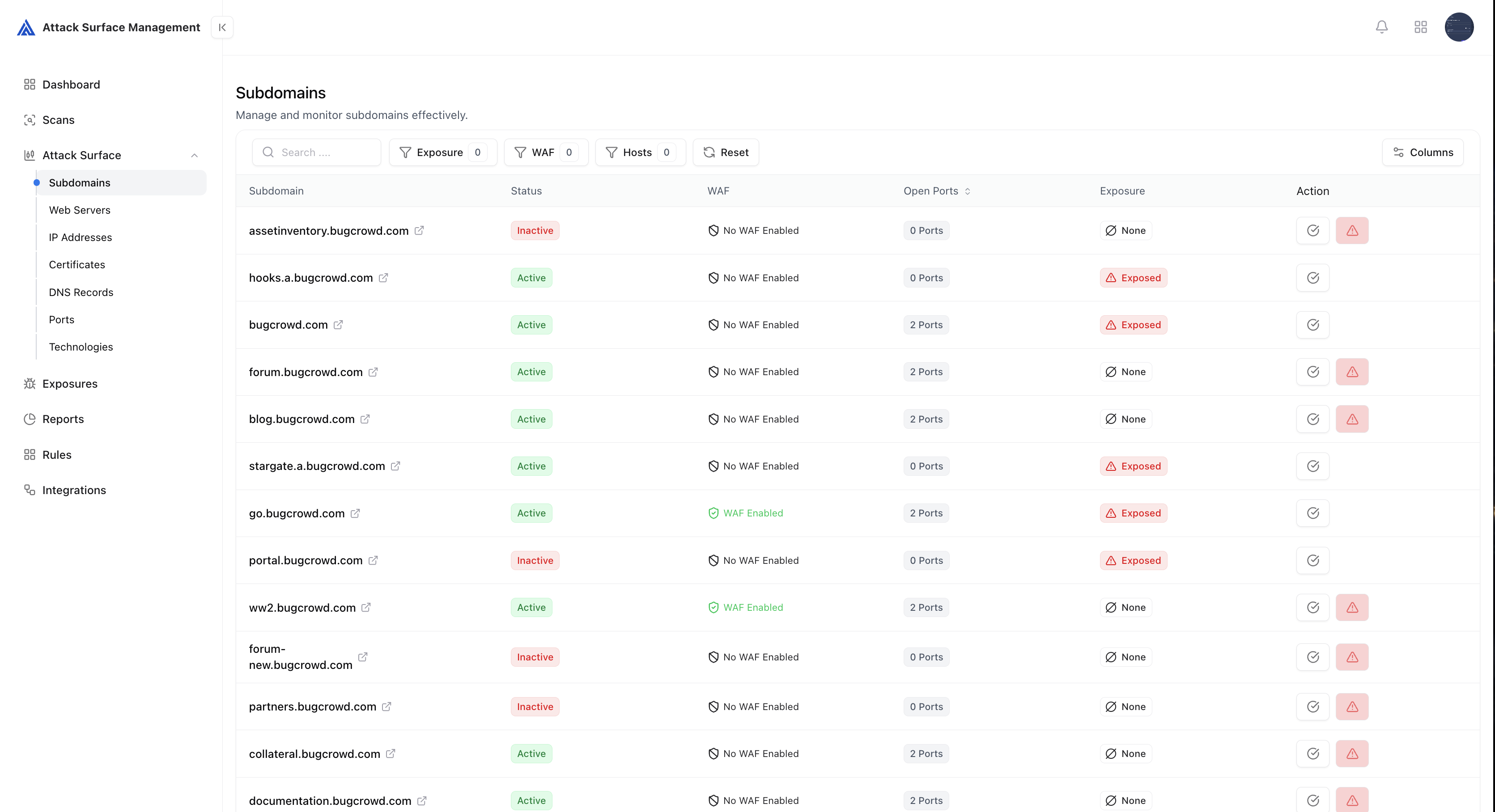
Overview of detected assets across subdomains, IPs, certificates, and ports
Overview
ASM continuously scans the internet and organizational namespaces (domains, IP ranges, ASN, certificates, etc.) to discover every exposed asset.Each asset is categorized by type, automatically correlated with others, and enriched with metadata such as ownership, exposure state, and technology stack. This helps organizations:
- Maintain complete visibility of their external infrastructure.
- Identify unknown or forgotten assets (“shadow IT”).
- Detect risky configurations or expired certificates before attackers do.
- Map relationships between subdomains, IPs, and services for faster incident triage.
Asset Types
The Asset Catalog organizes data into structured views for each category of discovered assets.🕸️ Subdomains
Subdomains are the foundational layer of your external footprint. ASM automatically discovers and tracks all subdomains related to your domains using active enumeration, passive feeds, DNS analysis, and certificate transparency logs.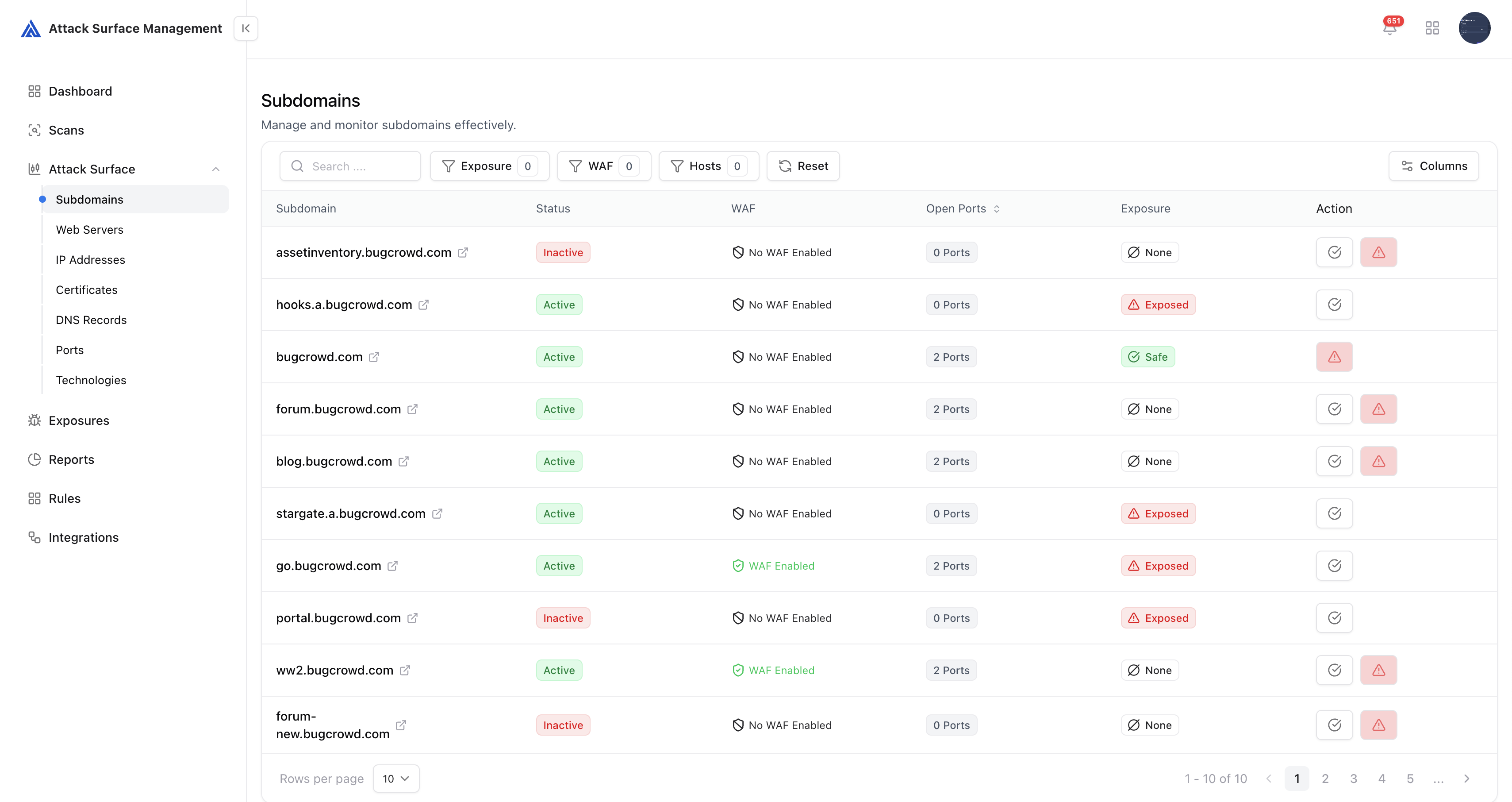
Subdomains table with live/dead status, HTTP fingerprints, and associated IPs
- Tracks subdomain status (live / dead / redirecting)
- Maps associated IP addresses, technologies, and SSL certificates
- Detects misconfigured or abandoned subdomains
- Highlights potential takeover risks
- Identify forgotten assets still resolving in DNS.
- Catch newly registered lookalike or malicious domains.
- Reduce the likelihood of subdomain takeovers and DNS hijacking.
🌐 Web Servers
Web servers are automatically fingerprinted based on HTTP responses, banner data, and service fingerprints.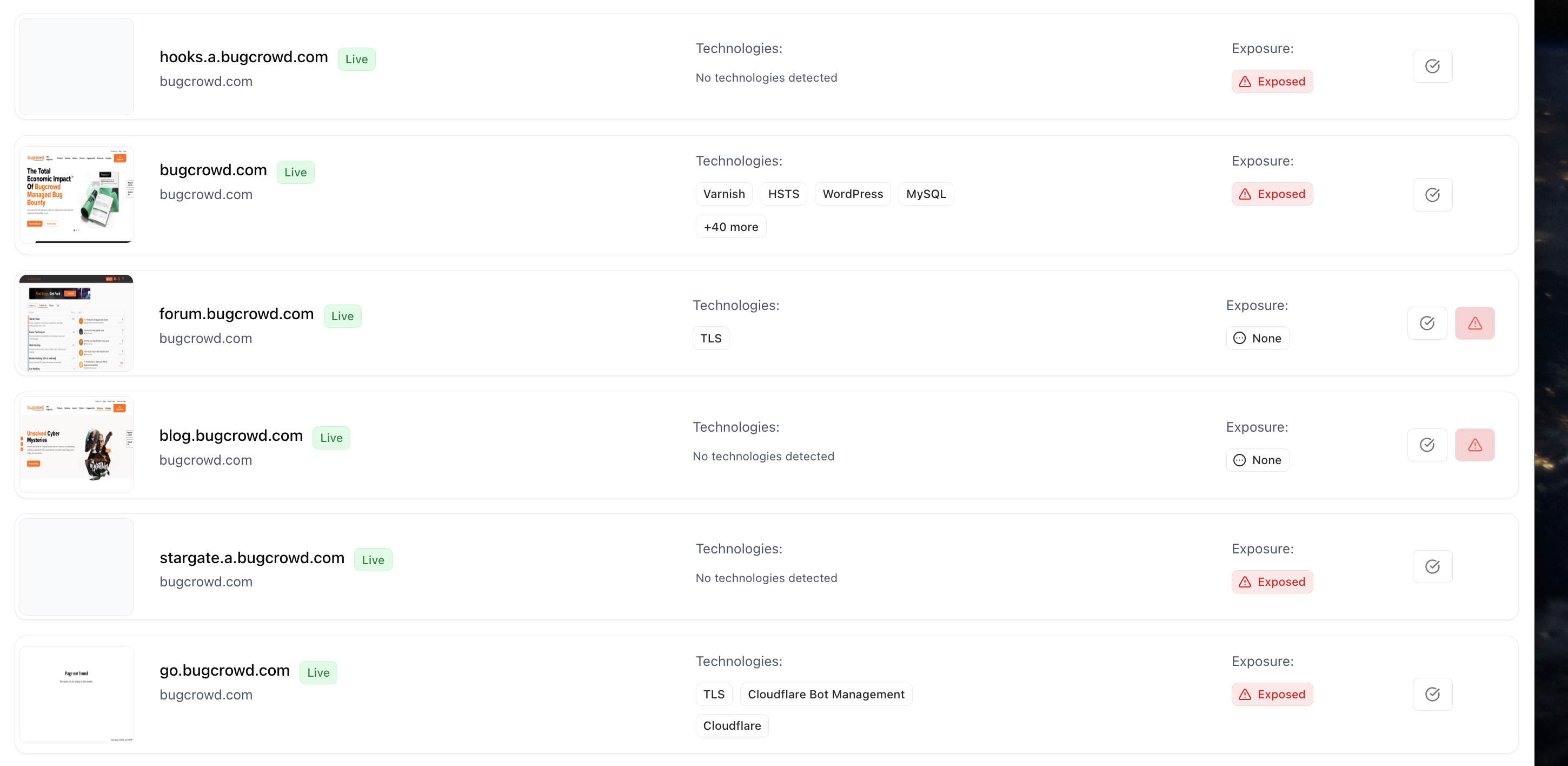
Web servers view showing discovered hosts, frameworks, and open endpoints
- Detects all HTTP(S) services across discovered assets
- Identifies server type, framework, headers, and exposure
- Correlates servers with SSL certificates and IPs
- Flags servers with default or vulnerable configurations
- Gain a full map of all web-facing endpoints.
- Detect shadow applications or deprecated services.
- Support vulnerability prioritization in VM and AppSec workflows.
📡 IP Addresses
Every discovered host or domain is linked to its active IP addresses — both IPv4 and IPv6.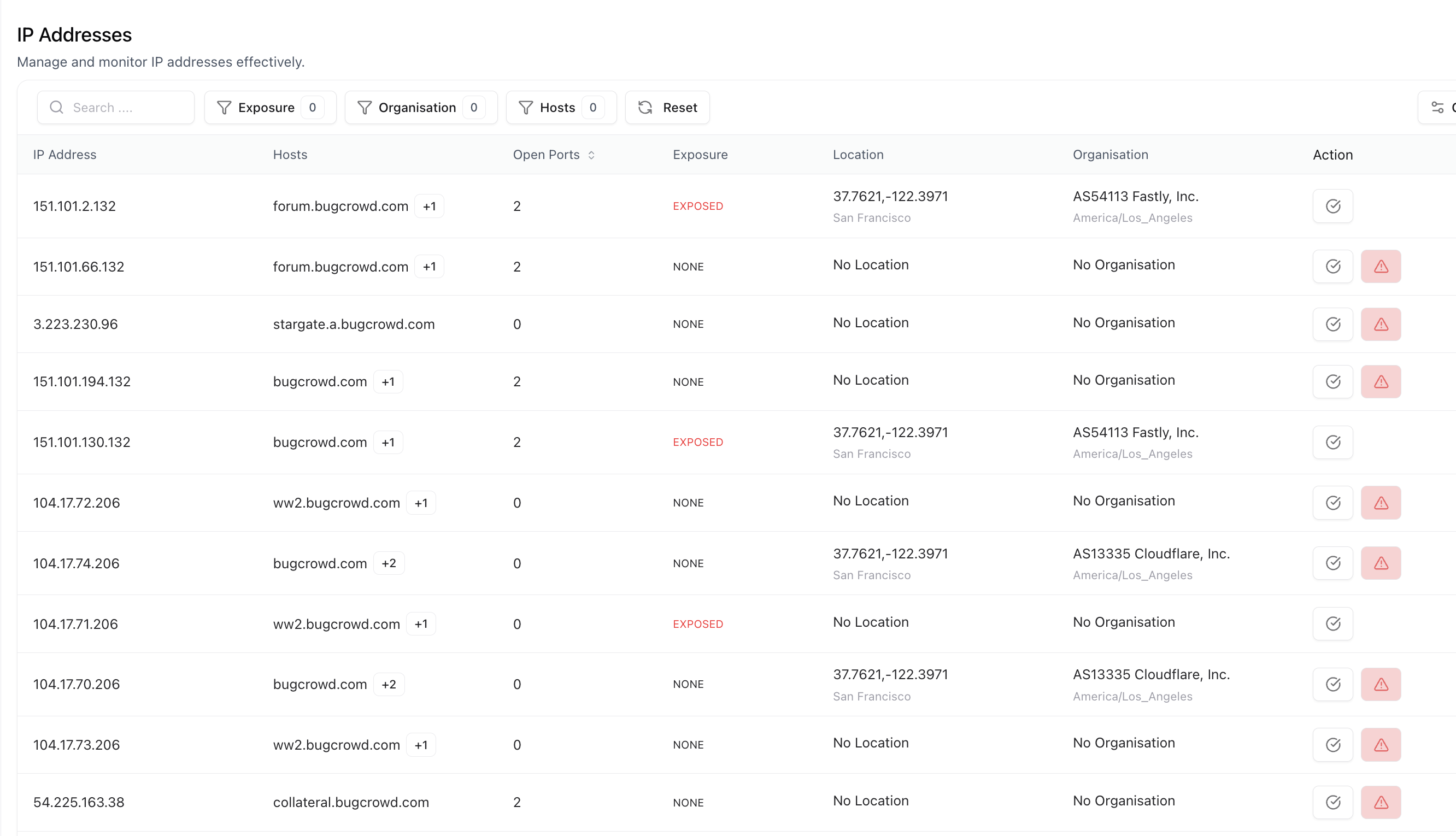
IP address catalog showing associated domains, hosting providers, and geolocation
- Maps domains ↔ IPs ↔ organizations
- Identifies hosting providers, cloud vendors, and geolocation
- Detects publicly accessible or misconfigured IPs
- Tracks changes in ownership or assignment over time
- Quickly identify which assets are hosted externally vs internally.
- Detect exposed cloud resources or test environments.
- Simplify asset ownership tracking across hybrid networks.
🔒 Certificates
SSL/TLS certificates are automatically discovered across domains and IPs, providing full visibility into encryption posture and expiry risks.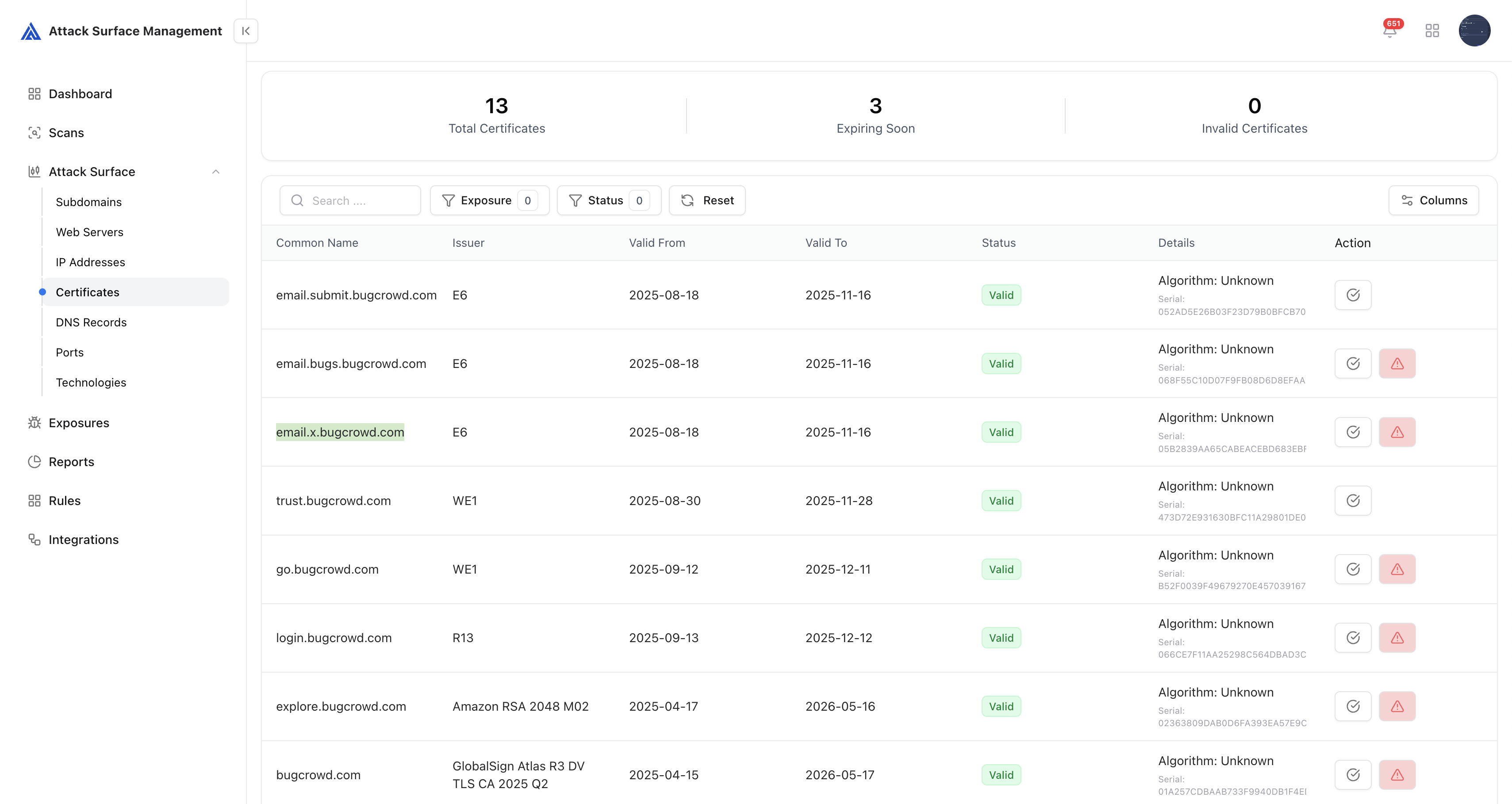
Certificates view showing validity, issuer, and exposure state
- Lists valid, expiring, and invalid certificates
- Tracks issuer, algorithm, and serial metadata
- Correlates certificates with domains and IPs
- Flags certificates associated with exposed or expired assets
- Prevent service downtime due to expired SSLs.
- Ensure encryption compliance across all external services.
- Identify weak or deprecated encryption algorithms early.
⚙️ Ports
ASM actively monitors exposed network ports across all IPs to detect open, filtered, or closed states.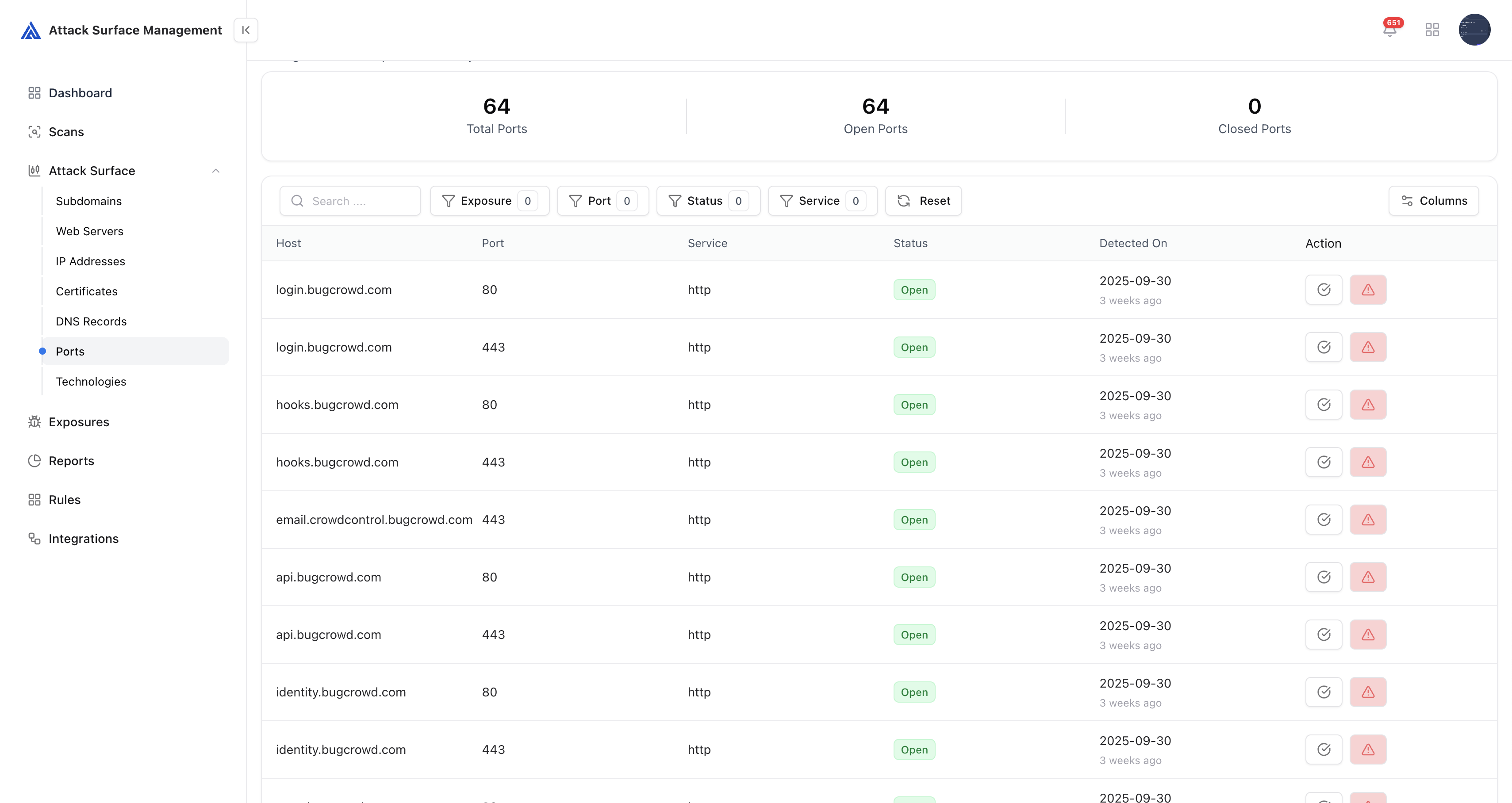
Port catalog with exposure analysis and service banners
- Lists all open ports and associated protocols
- Performs banner grabbing for service identification
- Detects risky or non-standard ports in production environments
- Maps ports to corresponding domains, IPs, and services
- Identify unexpected open ports and network misconfigurations.
- Correlate exposed services with vulnerability scanners.
- Enforce least-exposure network policies.
🧩 Technologies
ASM identifies and catalogs technologies used across your infrastructure using fingerprints and response signatures.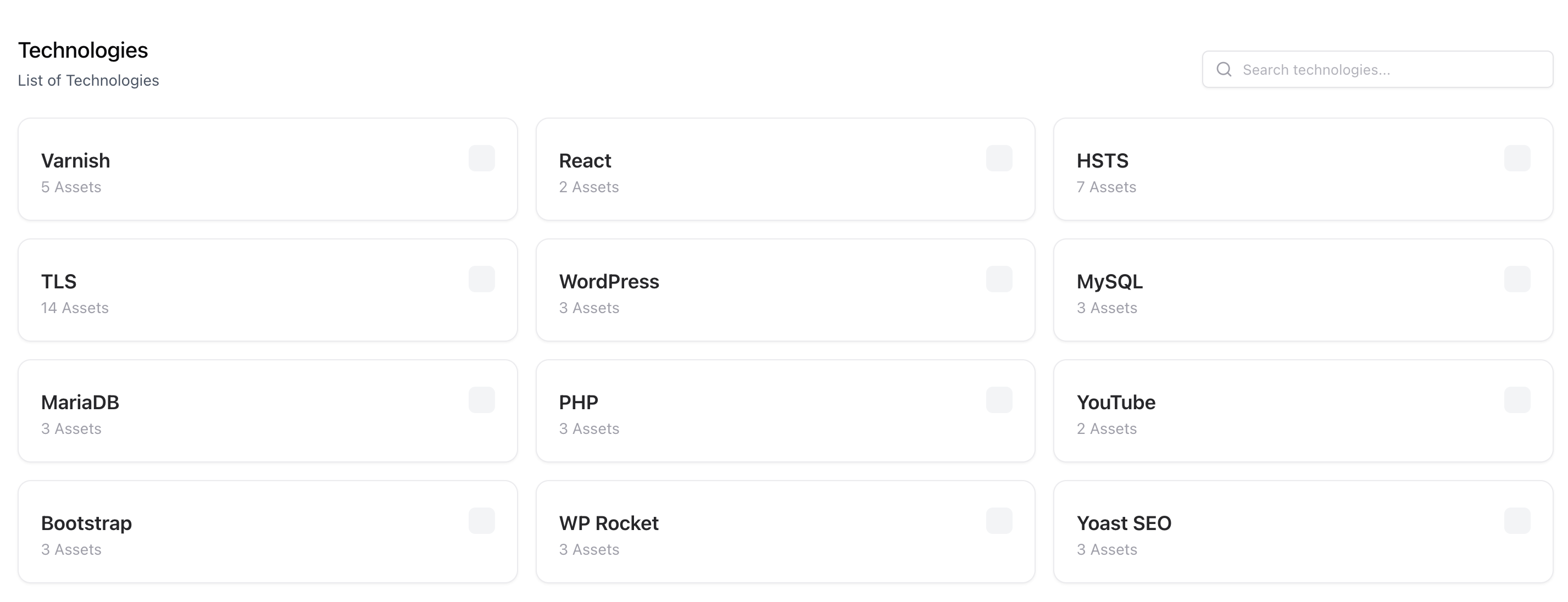
Technology stack overview showing detected frameworks and product versions
- Detects frameworks, CMS, server software, and libraries
- Maps technology usage per domain or web server
- Flags outdated or vulnerable technology versions
- Links technologies to known CVEs or public exploits
- Understand technology stack distribution across your org.
- Prioritize patching of vulnerable frameworks.
- Detect unauthorized or outdated software in production.
🧭 DNS Records
ASM continuously collects and monitors DNS records for all tracked domains and subdomains.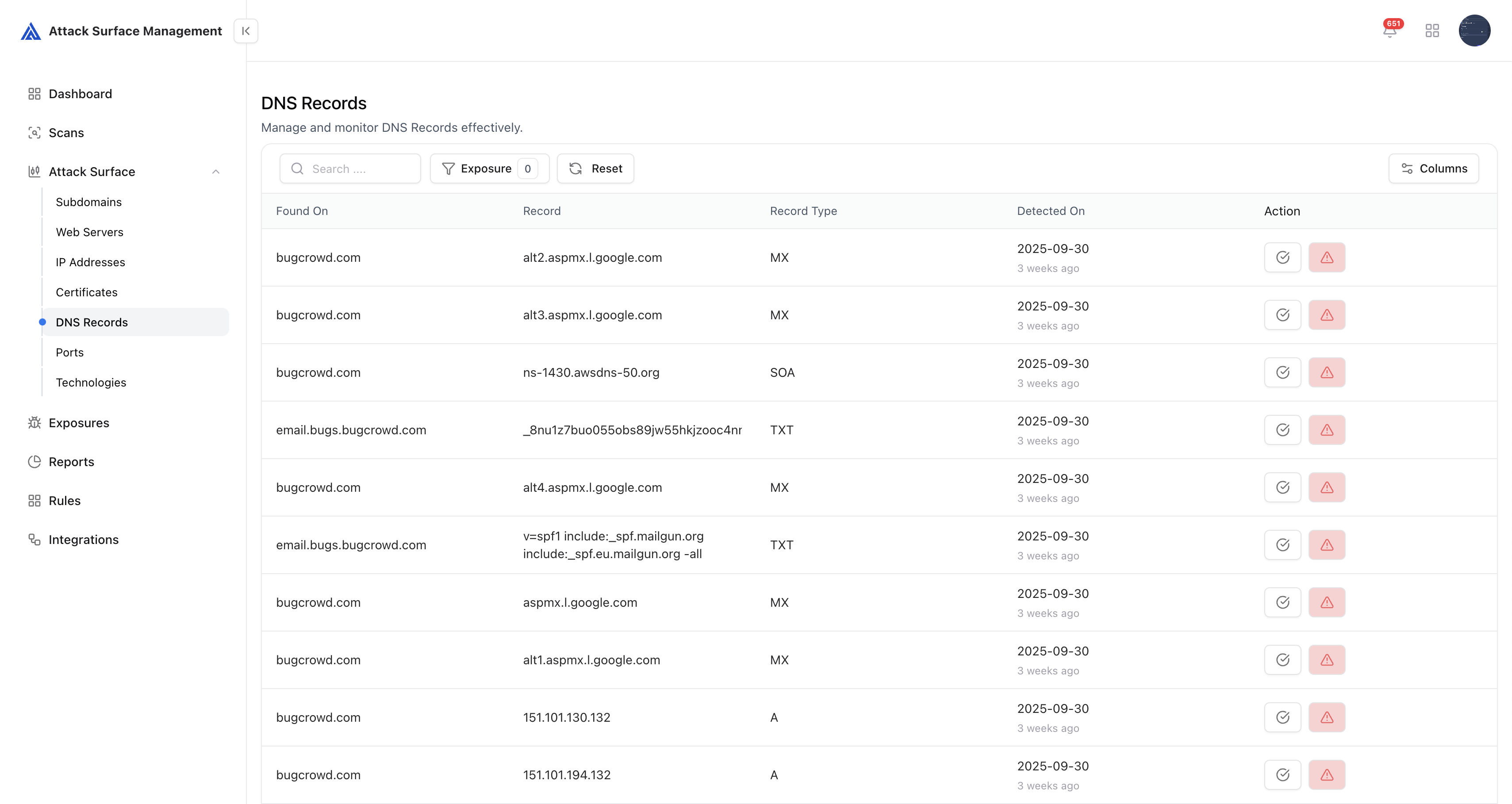
DNS record breakdown showing A, CNAME, TXT, MX, and NS entries
- Monitors A, AAAA, CNAME, MX, TXT, NS, and SRV records
- Detects dangling or misconfigured DNS entries
- Tracks record changes over time for forensic and alerting use
- Correlates DNS with other discovered assets
- Identify shadow DNS entries pointing to unowned infrastructure.
- Detect record changes that may indicate compromise.
- Maintain up-to-date DNS inventories for compliance and auditing.
Unified Contextual Correlation
All assets within the catalog are deeply interconnected. For example:- A subdomain links to an IP, which links to open ports, technologies, and certificates.
- These relationships create a graph of your attack surface, allowing better impact analysis and automated risk scoring.
- Context-driven risk prioritization
- Root-cause analysis during incidents
- Smart automation for vulnerability management workflows
Continuous Refresh via Adapters
ASM supports integrations with both enterprise and open-source discovery tools using its Adapter Framework.Adapters continuously sync and enrich asset data from sources like Shodan, Censys, VirusTotal, and internal scanners. Key Benefits:
- Keep asset inventory updated in real-time
- Reduce false positives through adaptive correlation
- Automate onboarding of new data sources without code changes
Business Value Summary
| Objective | How ASM Helps |
|---|---|
| Visibility | Centralized inventory of all external-facing assets |
| Risk Reduction | Detect exposed, misconfigured, or outdated components |
| Compliance | Maintain up-to-date asset documentation for audits |
| Efficiency | Reduce manual discovery and correlation workload |
| Incident Response | Rapidly trace relationships between assets during investigations |
Next Steps
Explore Exposures
Learn how detected assets are automatically analyzed for exposures and mapped to vulnerabilities.